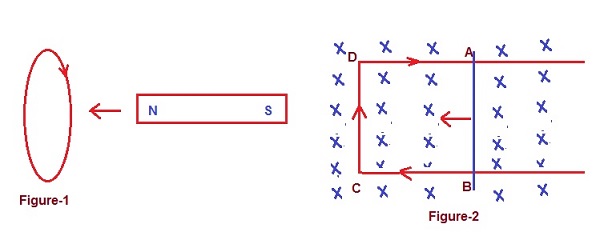Lenz’s Law is a fundamental law of electromagnetism that describes the direction of an induced electric current in a conductor when the magnetic field around it changes. It states that the direction of the induced current is such that it opposes the change in the magnetic field that produced it.
Lenz’s Law has important applications in designing and operating many electromechanical devices, such as electric motors, microphones, electromagnets, transformers, and generators. Understanding Lenz’s Law helps ensure these devices’ efficient and safe operation.
Lenz’s Law Examples in Real Life
Here are some examples of Lenz’s Law in real life.
1. Air Conditioners
Air conditioners have been designed to reduce the temperature of a room or an enclosed space. They operate through a refrigerant, which undergoes compression to become hot and then expands, resulting in a cooling effect. This process requires energy to be carried out, thus creating electromagnetic fields that resist it.
Air conditioners come in various types and sizes, each with unique features and capabilities. Some can be mounted on walls or ceilings, while others are portable and easily moved around. They are essential for maintaining comfortable indoor temperatures during hot weather conditions and ensuring optimal living conditions.
Air conditioners also help to purify the air by filtering out pollutants and allergens, making them beneficial for individuals with respiratory problems or allergies. Overall, air conditioners provide a convenient way of regulating indoor temperatures and improving the quality of life for many people worldwide.
2. Electromagnetic Induction
Electromagnetic induction is a process where a magnet moving towards a conductor (like a metal wire) will create an electrical current in the wire. This electrical energy then produces its magnetic field, which acts against the original magnetic field and slows down the movement of the magnet. It’s like when you push two magnets together with opposite poles – they resist each other and slow down.
In this case, the induced current creates a magnetic field that opposes the original magnetic force of the moving magnet. This phenomenon has many practical applications, such as generating electricity in power plants or using induction cooktops to heat pots and pans without direct contact with flames or heating elements.
3. Transformers
Transformers work by using two coils with different numbers of turns. When an alternating current is passed through the primary coil, it creates a magnetic field, which then induces a current in the secondary coil.
However, this induced current in the secondary coil will oppose or resist the current flow in the primary coil. This resistance reduces the current flow and voltage passing through the transformer. Simply put, transformers use electricity to create a magnetic field, producing more electricity but at a lower strength than what was originally put into it.
4. Magnetic Damping
Magnetic damping happens when a coil of wire is placed inside a magnetic field, which means magnets surround it. When the coil of wire is moved through this magnetic field, it creates some electric currents in the coil. These currents produce another magnetic field that opposes or resists the original movement. For instance, imagine you’re trying to push two magnets together with your hands. If you try to push them too quickly, they’ll resist each other and feel like they’re pushing back against you because of their opposing magnetic fields. In the same way, when an object moves through a magnetic field, any induced electrical currents will create their opposing magnetic fields. This effect can be useful in things like surge protectors because it helps to slow down any sudden surges or spikes in the electrical current before they reach your devices and potentially cause damage.
5. Magnetic Levitation Trains
There are only six Maglev trains worldwide: three in China, two in South Korea, and one in Japan. These trains use magnetic levitation to float above the tracks, eliminating friction and allowing for faster speeds. The train is propelled forward by electromagnetic fields created by the interaction between the train’s magnets and those on the track. However, Lenz’s Law comes into play when braking the train. The opposing force generated by eddy currents in the track slows down the train, stopping it.
Image source: 1, 2, 3

